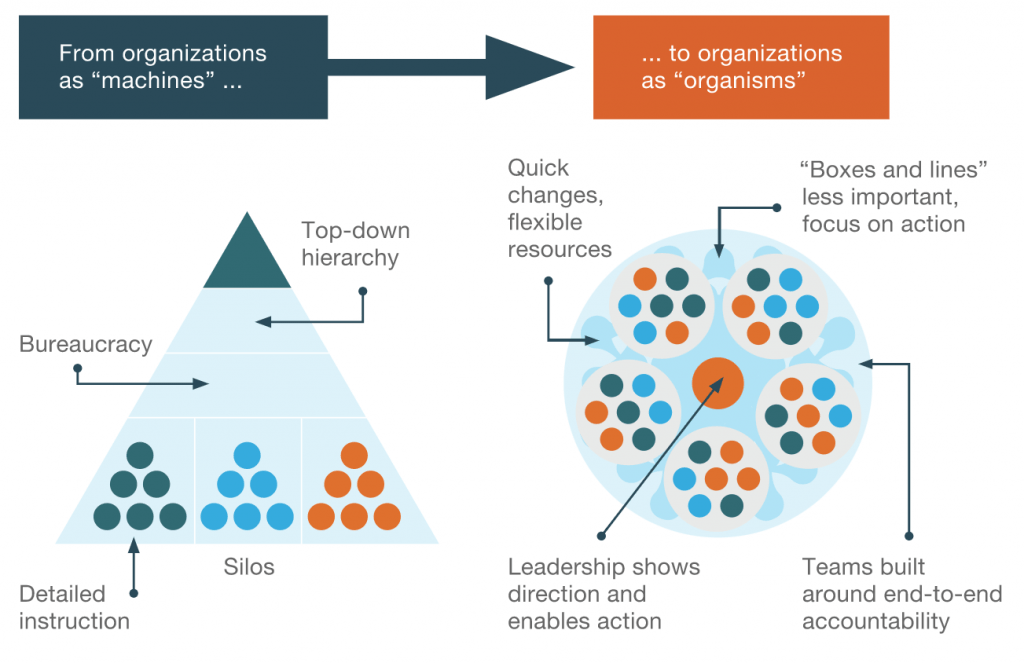What do you think of when you hear the word “agile” in the context of agile methodologies and agile companies? It may seem like little more than a buzzword, far from your day-to-day reality — “something that other people say,” even. But in these times of constant challenges and volatile surroundings, the ability to adapt constantly becomes absolutely necessary. As a leader, you must lead this never-ending evolution in a dynamic way: constant learning and the ability to adapt quickly are the name of the game.
Prof. Guido Stein has some pointers for being an agile leader, and for your company to be able to respond in a flexible and quick way to the needs of both clients and employees. But first, some context.
Discover the Guide to the main types of leaders, which one are you?
What is agile management?
In 2001, software developers from the U.S. created a manifesto for the agile development of software. In a world which moves at a relentless pace, it seemed a natural response to the evident shortcomings of the cascade model commonly used in projects. This model is based on a sequential flow (development, implementation, adjustments, sign-off) and is hierarchical in nature, frequently involving costly changes. What’s more, it is slow and often not flexible enough for clients.

Source: McKinsey & Company.
The evolution towards the concept of organization as entity means seeing the company as an open system that is developing a process dominated by rapid response and efficiency, as adapted to the environment. It offers myriad integrated responses to the many different needs of clients.
The foundations of the agile method were built through Agile Alliance, which can be summed up in these four simple concepts, and compared against the traditional method as follow:
- Individuals and interactions vs. processes and tools
- Functioning software vs. technical documents
- Collaboration with the client vs. contractual negotiation
- Response to change vs. following a plan
Whilst high-tech companies, telecommunications firms, the financial services industry, the media and the training sector are the major pioneers in the shift towards agile methodology, it is widely applicable and can be adapted to any sector.
3 characteristics of agile companies
You might ask yourself: “Is it possible to make my company more agile?” Agile philosophy can be applied to many organizations. As a leader, you can promote agility in your company or department by following these key principles:
1. Small, independently functioning teams
The first premise is the formation of small work units that function on their own and have a high degree of interaction. They must be cross-functional and above all receive client feedback continuously. A strong sense of responsibility, and having a direct impact on the company’s bottom line, will heighten your employees’ commitment to performance and contribution to the overall project.
2. A focus on the client and on adapting to the environment
Knowing the customer’s point of view first-hand — and continuously — allows you to adjust offers and production methods quickly. That leads to high customer satisfaction and a feeling of being closely supported.
3. A network of high-performing teams
These teams work outside the constraints of bureaucracy and the controls that surround decision-making. The team network embodies organizational agility because it works autonomously, with short cycles, and therefore enables rapid learning and decision-making leveraged by the latest technology. The hierarchical system controlled by the organization is responsible for: the efficiency and reliability of the processes, approving budgets, compensations and metrics, and supervising the resolution of generic problems.
As you can see, the attributes of agile companies are simple, but they require the effort and commitment of everyone in the company.
Agile leadership: Key ways to encourage an agile philosophy as a leader
If you have read this far, you likely need no more persuading about the advantages of bringing agility to your business management. So, to help you achieve your aim, here is our 13-step guide:

1. Before making any changes, identify all obstacles in the way of effective productivity
2. Define the roles and responsibilities at the beginning of the project
3. Allow both a free-flowing and coordinated self-management
4. Delegate to the lower echelons of the organization. Success comes from people who have a surplus of experience and information, a good reputation, and an abundance of energy and passion
5. Define a strategy with clear objectives
6. Coordinate work teams in a cross-functional manner
7. Establish advanced information systems
8. Eliminate all non-essential processes related to overseeing and to the creation of bureaucracy
9. Uproot deeply engrained structures: organization, functions, budgets, incentives and the measurement of results
10. Form teams of between three and five people; in large companies, up to 20 or 30
11. Evaluate the results in a certain depth from the first year
12. Keep chasing the goal of constant, incremental improvement, and consider your most important decision to be the next one, not the previous one
13. Stop and think. In the age of agile transformation, it is still necessary to reflect and learn.
Discover the 13 questions to find out if you are a good leader.
As you can see, implementing an agile culture in your company takes preparation, reflection and a lot of perseverance. What’s more, to be more agile you need to create a culture of intimate leadership, focusing on your people and on their development. All of these are leadership competencies that you won’t find in any project management toolbox. IESE Business School’s executive education programs can help you to become the agile leader you want to be.

















